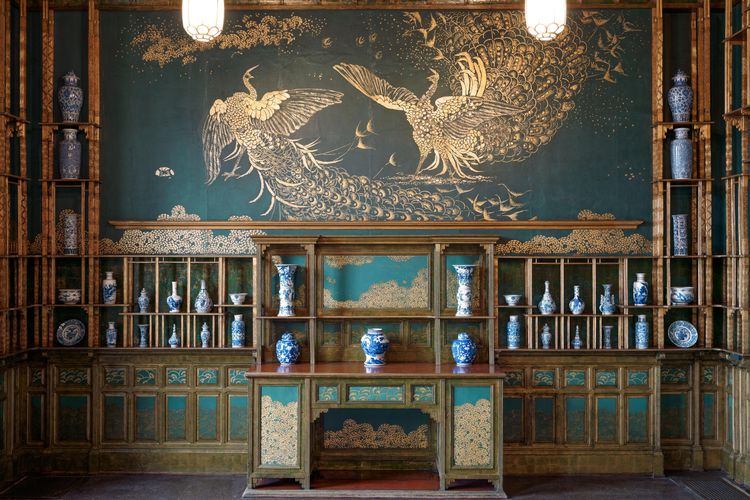ART WORLD NEWS
The Smithsonian presents Whistler’s Peacock Room as the artist envisioned it
[ad_1]
The reinstalled Peacock Room in Blue and White (1834–1903) by James McNeill Whistler.
Smithsonian Institution, Freer Gallery of Art and Arthur M. Sackler Gallery
For the first time since it opened in 1923, the Smithsonian’s Freer Gallery of Art in Washington, DC, is displaying its Victorian-era Peacock Room as the American artist James McNeill Whistler originally intended it to be seen. Called the Peacock Room in Blue and White, the reinstalled dining room opened on 18 May and is lined with 177 blue-and-white Chinese porcelains, restoring it approximately to the way it appeared in the 1870s.
“Today, for the first time in more than a century, and for the very first time in the history of the Freer Gallery of Art, you get to see the Peacock Room according to Whistler’s aesthetic vision”, says Lee Glazer, the co-curator of the exhibition and director of the Lunder Institute for American Art at Colby College.
The Peacock Room is one of the most popular draws at the Freer, attracting visitors with its extravagant ornamentation and exaggerated paintings of peacocks. Its backstory is also dramatic: Whistler, then an expat artist in London, overhauled the dining room of the British shipping magnate Frederick Leyland in 1876-77. But he did the work while Leyland was away, then demanded a substantial sum for the redesign, leading to an irreparable rift between the artist and the patron. Whistler portrayed their antagonism in the room’s centerpiece, an allegorical painting in gold of two puffed-up male peacocks facing off.
Whistler’s blue, green and gold decoration of the room was intended to complement Leyland’s extensive collection of blue-and-white Kangxi-era Chinese porcelains, which were ensconced in a lattice of shelves that were then fashionable as part of the East Asian mania among Victorian collectors. By the time the museum’s founder Charles Lang Freer acquired the Peacock Room in 1904, Leyland had died and his 17th- and 18th-century Kangxi porcelains had all been sold at auction.
The reinstalled Peacock Room in Blue and White (1834–1903) by James McNeill Whistler.
Smithsonian Institution, Freer Gallery of Art and Arthur M. Sackler Gallery
The Freer Gallery showed the Peacock Room in various guises over the years as curatorial winds shifted—sometimes with the shelves bare, or with a limited number of Kangxi porcelains acquired separately or, most recently, with mainly monochrome and earth-toned ceramics from Middle East and East Asia collected personally by Freer.
The new installation, based on an archival study of photos of the Peacock Room taken in 1892 in Leyland’s house, brings back the colour harmonies in Whistler’s original conception of the space. Two walls showcase 82 blue-and-white Kangxi-era pieces from the Freer’s holdings. Lacking enough period ceramics to fill the room, the museum commissioned 95 new Kangxi-style blue-and-white porcelains from Jingdezhen, China, the traditional centre of the craft, for the other two walls.
The Peacock Room in Blue in White is to be displayed indefinitely, but Glazer says that doesn’t mean it will be permanent. “There is not one single story of the Peacock Room, but many chapters in a very dynamic transnational history”, she says. “I hope [this chapter] will not become static and completely iconic, but understood as one in a sequence of moments in the room’s history”.
[ad_2]
Source link













